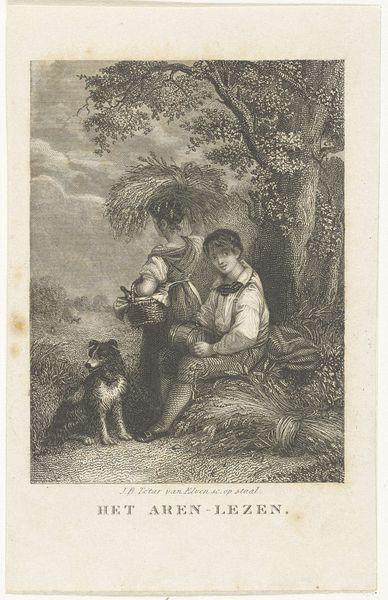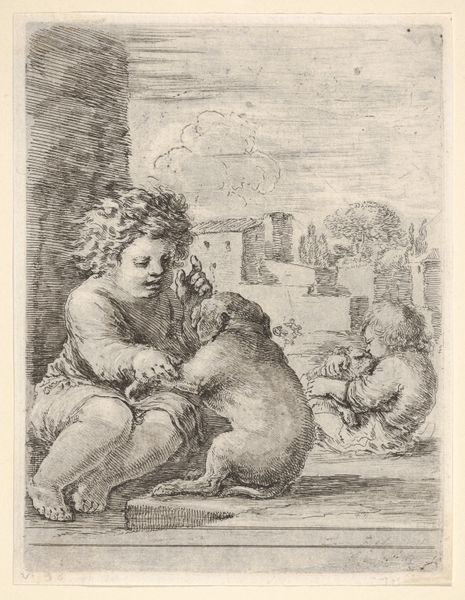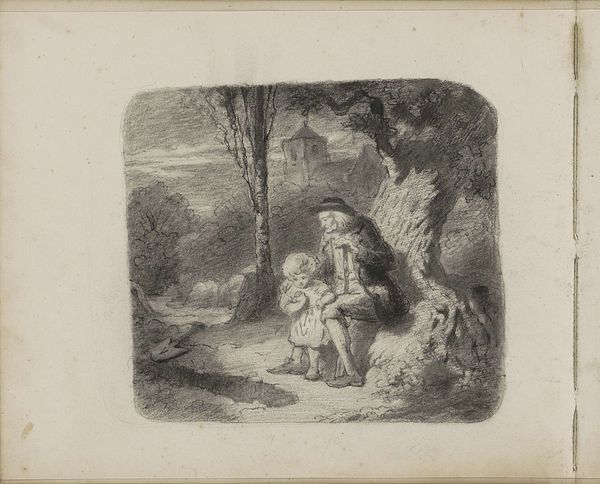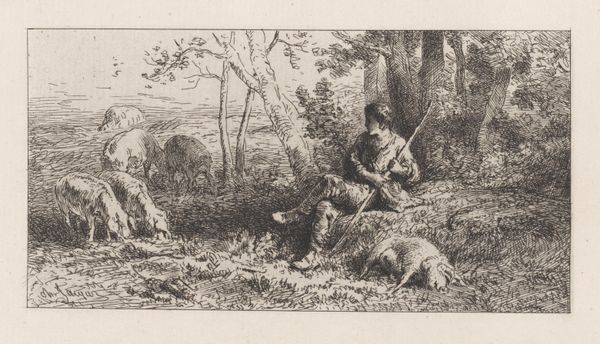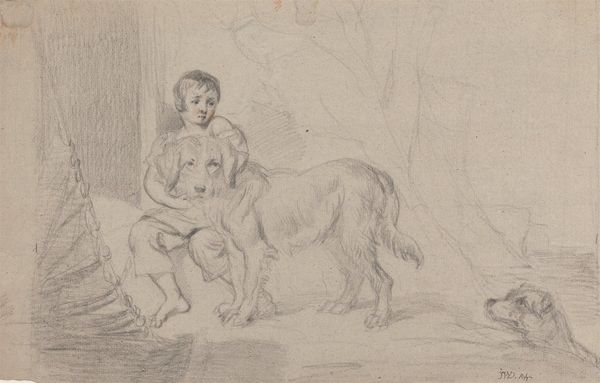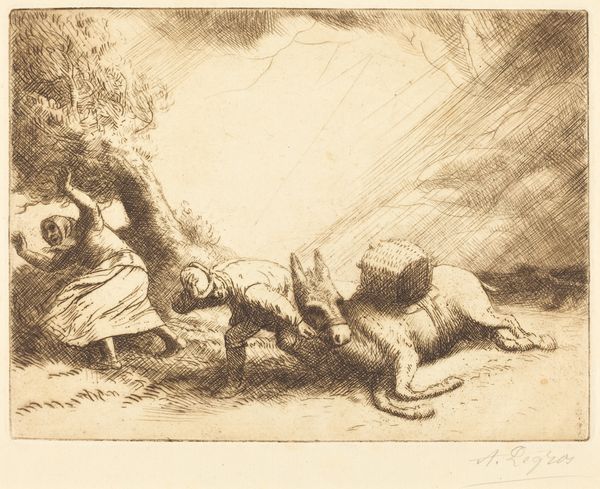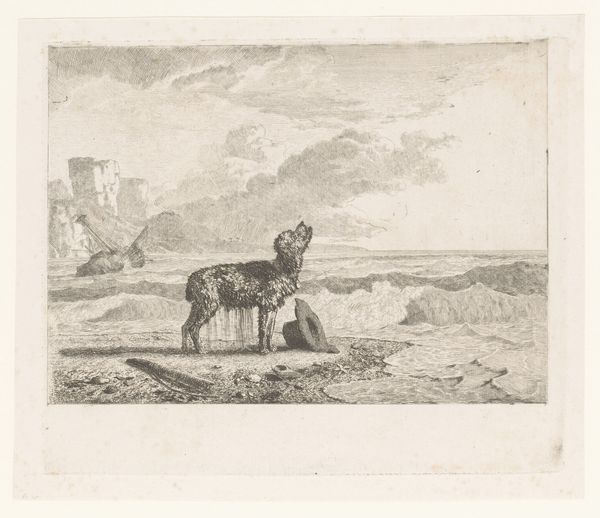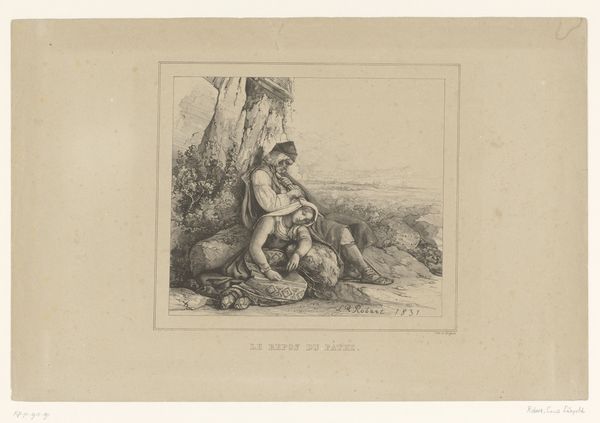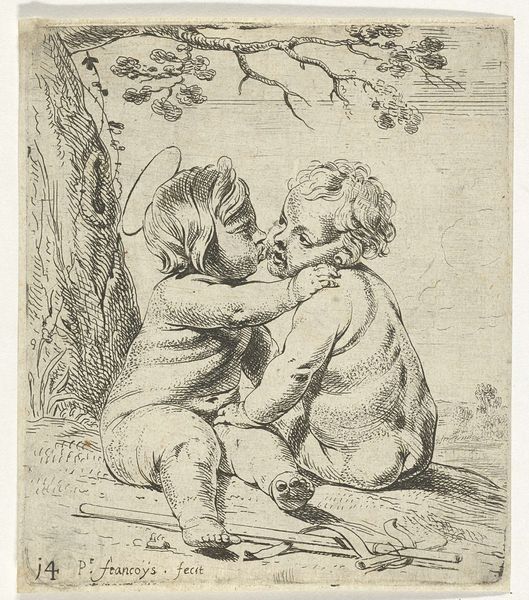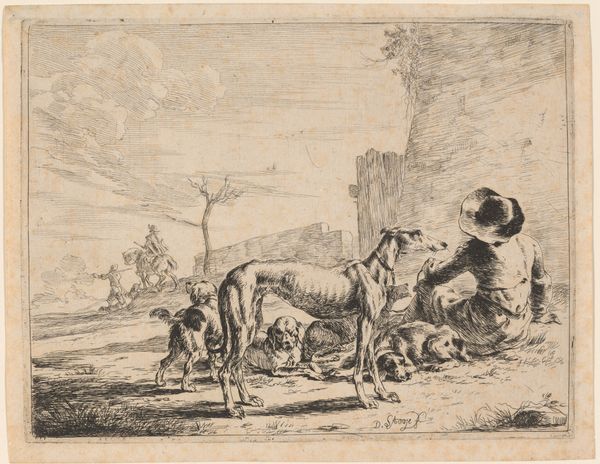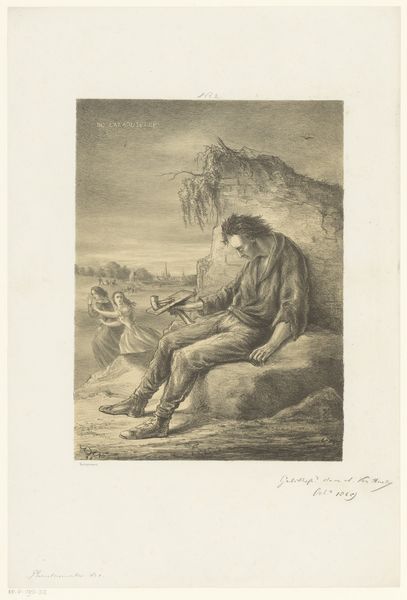
drawing, engraving
#
portrait
#
drawing
#
dog
#
romanticism
#
line
#
portrait drawing
#
genre-painting
#
engraving
Dimensions: height 234 mm, width 294 mm
Copyright: Rijks Museum: Open Domain
Editor: Here we have Martin Ferdinand Quadal’s "Hond en jongen," made in 1793. It's an engraving depicting a boy with his dog, and what immediately strikes me is the stark contrast between the figures and the rather sketchy background. How do you interpret this work? Curator: That contrast is crucial, and it leads me to think about the hierarchies embedded within 18th-century society. While on the surface, this looks like a simple genre scene, we need to question who had the leisure to commission such works. Are we truly seeing a celebration of the common man, or is it an idealised, even patronising, representation created for a privileged audience? Editor: That's a perspective I hadn't considered. I was focused on the apparent innocence of the scene. Curator: Exactly! That "innocence" is precisely what needs unpacking. The boy's somewhat ragged attire and barefoot state, juxtaposed with the dog’s calm pose, hint at a particular relationship. How much agency do they truly possess within the economic and social structures of the time? Is this supposed closeness to nature really just poverty? Editor: So, you're saying that instead of face-value sentimentalism, it prompts questions about social commentary? Curator: Precisely. The engraving technique, with its emphasis on line, can even be read as reinforcing the social divisions. The lines demarcate, delineate, almost categorise these figures within their assigned roles. Consider also how such imagery was circulated and consumed: who controlled the narrative then, and who benefits from these narratives today? Editor: Wow, that’s a really interesting way to look at it. I was completely missing the layers of social and historical context. Curator: It's easy to be seduced by the seeming simplicity. But by interrogating the underlying power dynamics, we can reveal a much more complex picture. I’m glad that looking together allowed both of us to think of these hidden perspectives.
Comments
No comments
Be the first to comment and join the conversation on the ultimate creative platform.
